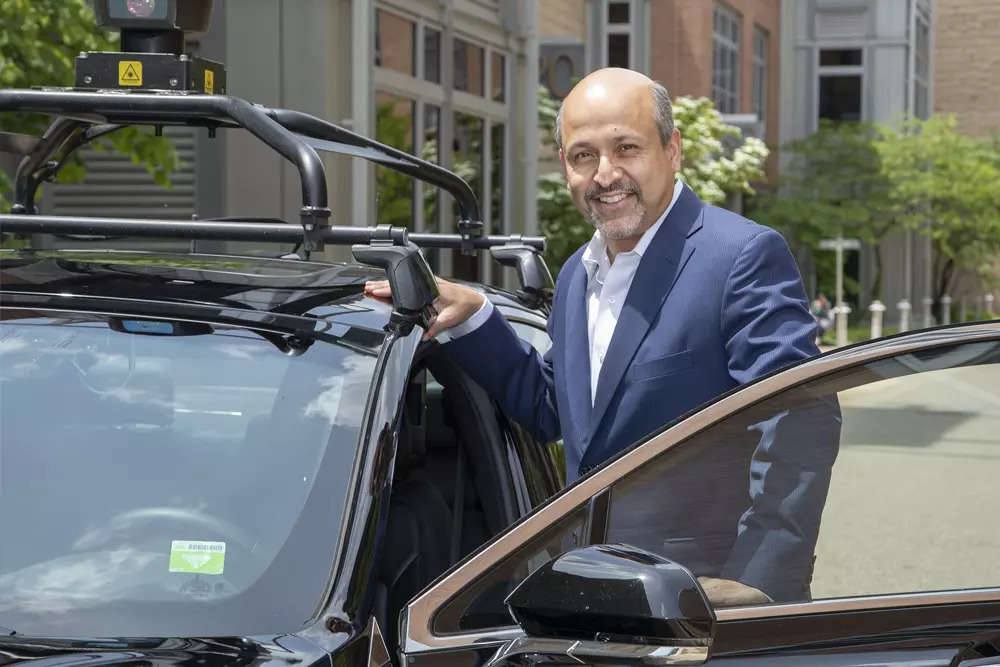
New Delhi: The pillar-to-pillar display and the ADAS (Advanced Driver Assistance System) suite in the Mahindra XUV 700, launched two and a half years ago, are the much-talked about features of the model. It also made it to be the highly priced model from an Indian OEM, and a successful one at that. Visteon may take some credit for it as it’s the display supplier. Now the American major wants to embark on some horizontal integration of ADAS and cockpit functions.
The Mahindra XUV 700 display example is cited above as it’s the first time that the convergence of Visteon’s display and instrument cluster technology featured in an Indian vehicle. Sachin Lawande, President and CEO of Visteon, expects something similar with the new offering. “We see a similar dynamic now, getting to the next level by integrating ADAS and the cockpit onto one chip,” he told ETAuto.

The convergence of the ADAS and cockpit systems will allow both cost savings and convenience, claims Lawande. The combined system cost is being pegged at USD 600, as against USD 500 each for the ADAS (L2) and the cockpit solutions. The proposition could be more with the saved wiring harness cost.
In terms of convenience, all the safety, entertainment, and infotainment information are on one chip, one software. “And that can be harnessed to render on different screens that are available to you, to provide different kinds of information for the driver versus the passenger or people in the back. The in-cabin experience, including a full 360-degree view of the vehicles, could be compared to what users experience in planes,” says Lawande.
First deployment in India
Discussions with some OEMs in Germany for the tech solution took place last week, and some meetings with Indian OEMs for the same are taking place this week. Lawande would “venture a bet” that India will be the first to adopt the new technology solution as Indian OEMs are getting into a hyper-competitive mode like what is seen in China.
Though not with the conventional vehicles, the Electric Vehicles (EV) are expected to lead the adoption for new technologies such as the upcoming one from Visteon. With the advanced software-controlled features, also acting as brand differentiators for EVs, the Tier 1 major works to meet a cost model to make it viable for OEMs to put it in “very affordable vehicles”.
It has technical centres in Chennai, Bengaluru, Pune, Goa, Coimbatore and Trivandrum.
ADAS – a growing bet
Visteon’s “horizontal integration” move is also a strategy to expand its portfolio and enhance its business sustainability. At 5 years, ADAS is Visteon’s newest business, in which the company has invested “close to USD100 million” to build capabilities to tap the growing trend. “We didn’t want to be just another supplier using a Mobileye ADAS camera coming to the market,” says Lawande.
India’s ADAS market is projected to be a USD1 billion opportunity by FY28. With this trend gaining traction, Visteon plans to expand its India engineering team with experts in technologies that go into making the vehicle partly autonomous. Of the 80 engineering centres that Visteon has globally, 6 are in India. Around 2,000 engineers in India have been working primarily on instrument clusters, and cockpit technologies. “We are augmenting the (ADAS) team here with people that have radar experience, camera integration experience. We’re also recruiting more camera experts,” says Lawande. Visteon’s ADAS software development centres are located elsewhere, but the team in India will lead the integration, testing and validation for the domestic market.
Lawande was convinced of ADAS years ago, taking a call on “how much do you want to fund it” based on conviction can be tricky. He’s satisfied now that “it is playing to that vision of integration”. With cockpit electronics and software capabilities strengths developed, and an ADAS stack, he wants to enter a new “opportunity space”.
New investments in India and globally
ADAS is a promising and new business space, but Visteon’s strongest pillar is its instrument cluster business which generated USD 2 billion, or over half of the company’s revenue last year. The Tier 1 major shipped 15 million clusters in 2023, a year which saw 89 million cars built globally. Cockpit domain controllers are Visteon’s second largest business, and display the third largest.
It’s lined up with a fresh investment of USD 20 million to enhance manufacturing capacity of display units in India. This investment, which is equivalent to the investment the company has made in India so far, will be made in tranches. Visteon currently has a cumulative annual production capacity of 1.5 million units in five production lines in its Chennai plant. Production out of these lines, Lawande says, is already booked for 3 years.
The additional production capacity is expected to go on stream by the end of 2025, and by that time Visteon expects the Indian passenger vehicle industry to reach the 5 million mark. Visteon invests around USD140 million every year in its operations globally. About USD 100 million of it is in manufacturing.
With the display market growing in India, Visteon’s latest, called Deco Trim Command and Control Display, could also make its way into the market. The new product is a fully configurable control display offering design flexibility by blending seamlessly with surrounding materials when inactive, and wakes with the wave of a hand.
At 5%, India has a relatively small share in Visteon’s global revenue pie, but it’s roughly in line with the country’s share of the global passenger vehicle production. China, in line with its global position, is Visteon’s single largest market with a contribution of 20%, which is also equivalent to the contribution from the rest of Asia. The Americas, and Europe contribute equally at 30% each.
According to the latest ‘Research and Markets’ report, the global automotive instrument cluster market, which reached a size of USD7.8 billion in 2022, is set to experience substantial growth in the coming years, with a projected market size of USD11.4 billion by 2028. This growth corresponds to an impressive compound annual growth rate (CAGR) of 6.2% during the forecast period from 2023 to 2028.
With the new technology trends, and a different from earlier drive of Indian OEMs, Lwanade is bullish about the domestic passenger vehicle market’s performance, which will have a direct bearing on his company’s prospects too. “I expect the use of displays to go up, and expect India’s manufacturing to go up faster than in many other parts of the world. I’ll be surprised if India does not have a GDP matching growth in automotive,” he says, while envisaging India to be market of a “close to a million cars”.
















